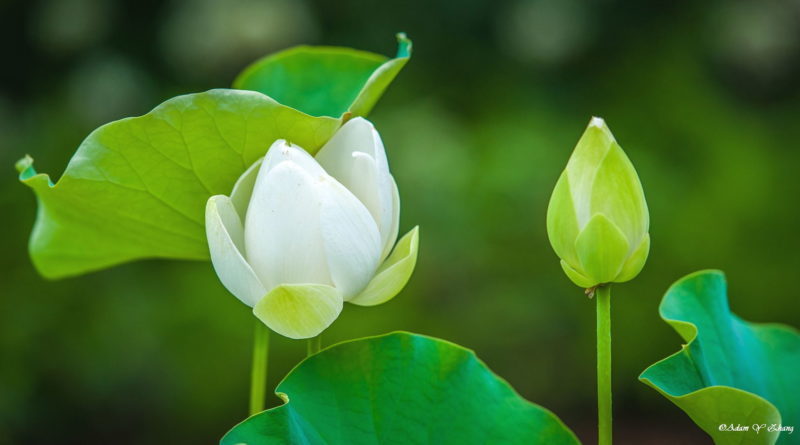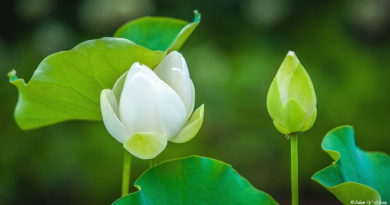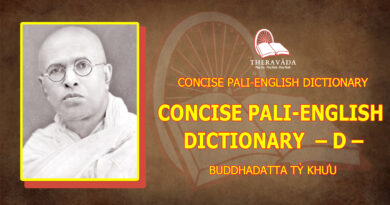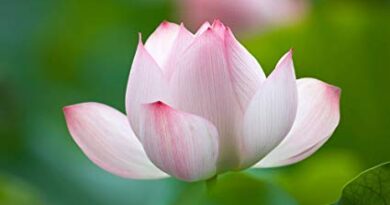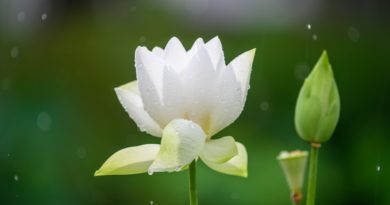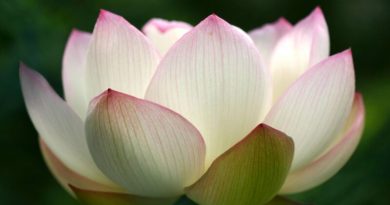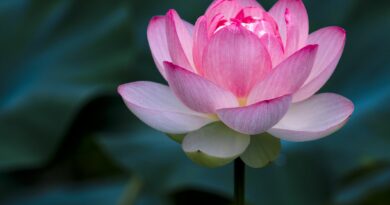DHAMMA RATANA – CHAPTER 5: THE FOUR CONSTITUENTS FOR SOTAPAN AND TWENTY-FOUR TYPES OF SOTAPAN
MAIN CONTENT
DHAMMA RATANA – CHAPTER 5: THE FOUR CONSTITUENTS FOR SOTAPAN AND TWENTY-FOUR TYPES OF SOTAPAN
On the day of M.E. 1356, first waning moon of Nattaw, at the 45th Anniversary Celebration for the admonishment of our Benefactor Rev: Mahasi Sayadaw, the sermon on “The Four Constituents for Sotapan and the Twenty-four Types of Sotapan “will be delivered. Since a sotapan has a safe-guard for his life-existences many aspire for it. There is a guarantee that a sotapan will be liberated from apaya. However to be a sotapan one has to acquire the four constituents for sotapan. If you all have already acquired them it is to be delighted, on the other hand if you have not yet acquired them, it is of utmost importance to strive for them.
Said the Lord Buddha, “The four constituents, for the attainment of Sotapan, should be acquired and practised. They are
(1) to take refuge in noble persons who could help you to attain magga nana and phala nana.
(2) to listen to noble dhamma which could help you to gain magga nana and phala nana.
(3) to cultivate right and proper attitude to gain merit.
(4) to practise what is adaptive to magga nana and phala nana.
It is a certainty that you will become a sotapan in this very life if you have acquired these four constituents. If you have already acquired them practise vipassana meditation delightfully. If not you should try to acquire them.
Motto: Refuge in noble persons, listen to dhamma.
Develope proper attitude and practise for magga and phala
These are the four requirements for sotapanna.
To take refuge in Noble Persons
However in the Buddha’s absence, take refuge in an arahant; if not available then take refuge in an anagan; if not possible it is sakcadagan; if not, take refuge in a sotapan. Even if a sotapan is not to be found then take refuge in those who have practised vipassana meditation. I sincerely believe that all of you take refuge in sayadaws of various vipassana meditation centres, and listen to dhamma and also that you practise vipassana meditation after developing proper attitude. For these reasons i.e. you have already acquired the four constituents, there is no doubt that you all can be sotapans in this very life, if you practise diligently.
To listen to dhamma
Except Buddhas and silent-Buddhas, there is no one who has attained magga nana and phala nana without listening to dhamma. Even Ashin Sariputtara and Ashin Moggallan had to listen to dhamma in order to gain dhamma. You all better- listen to satipattan dhamma. You would not gain dhamma if you do not listen to it. Those who are not earnest to listen to dhamma will not become a sotapan.
Develop proper attitude
If you aspire to be a sotapan you must develop proper attitude. By listening to dhamma one can develop proper attitude. For instance, as soon as you get up in the morning, you may see or hear pleasant or unpleasant sights and sounds. If it is pleasant you are inclined to cherish it and get attached to it. Moreover there develops a desire for it, that is (Lobha) greed. When it is an unpleasantness you must be prepared to perceive it in such a way so as not to be angry (dosa) and perturbed. You undoubtedly will not be a sotapan with lobha and dosa in your mind. Therefore you must be able to perceive both pleasantness and unpleasantness in such a way to gain merit bur not to develop lobha and dosa which are impurities (kilesa). How to do so?
When you experience pleasant sight and sound, ponder, Now things are pleasant and I’m happy. This is so, because I’ve done good to others in the past. To be happy and to have pleasantness in the future; I must be good to others in the present too. By doing so, I may gain merits and realise nibbana. ‘ There upon you no longer cherish the pleasantness nor develop desire for it since there is no attachment to it. Thus you gain merits.
Motto: Good deeds done in the past
Deserves the present good results
Good deeds done in the present.
In future things will be pleasant.
If it is unpleasantness, instead of putting blames on others, reflect thus. ‘I’m unhappy and disturbed now for the reasons that I’ve done so to the others in the past existences. Therefore I must be good and not to commit unmeritorious deeds. Hence I’ll not be unhappy and disturbed in the future.” Thus you gain merit, you are fortunate enough to he a human being, to be sons and daughters of good parents and to be under the guidance of good teachers due to your past good deeds. If you can develop a proper attitude, especially towards undertaking more meritorious deeds and surely will realise nibbana. Whether it is pleasantness or unpleasantness, if you could perceive them with proper attitude, you gain merits instead of developing lobha and dosa.
Demeritorious deeds will certainly give you ill-effects, nevertheless if you can perceive the ill-effects with proper attitude they will be reversed, In order to overcome the ill-results there is nothing more than under-taking good deeds and to develop proper attitude. To develop a proper attitude towards unpleasantness than pleasantness is important. If you can do so you have acquired merit.
To practise what is adaptive to magga and phala
Whenever we give alms-offerings don’t we pray for happiness and to attain nibbana. To practise what is adaptive to magga and phala is to give charity which is a support for the realization of nibbana. Moreover it is to observe precepts and to engage in samatha and vipassana practice. Of course, vipassana meditation, the most adaptive to magga and phala, will result in the attainment of magga and phala. You all should always aspire for the realization of nibbana. Insight meditation is the most proper practice for the realization of nibbana. Whenever there is opportunity to practise vipassana, never miss it. You all are now practising in accordance with Venerable Mahasi Sayadaw’s guidance.
Three Ways of Meditation
There are three ways of vipassana meditation: namely sitting, walking and general noting. In sitting practice note attentively and in detail. While sitting with closed eyes there is less chance of your mind wandering elsewhere. However in walking practice you may be perturbed by seeing things and persons especially when your concentration is weak. Thereupon progress in dhamma will be slow and also in gaining magga and phala. Most of the yogi like sitting practice because they can note ardently.
In general noting instead of noting in detail, you usually give sporadic attention to the actions and movements you made. Thence concentration is not strong, no progress and no gain of dhamma. It is a fact that concentration must be strong in order to develop insight knowledge. Therefore concentration is the first and utmost thing in vipassana meditation. Remember that if you have not properly cultivated concentration there will be retardation in gaining dhamma. If you keep on reflecting ” I am noting rupa and I am noting nama, “rising “and” falling” concentration will never develop.
Noting in sitting practice with closed eyes can promote concentration better than walking practice and general noting. In walking practice and general noting you may not know how to control your eyes. The best thing is to keep your eyes down cast while walking or in general noting. If you cannot do so, it is better to practise with closed eyes. Ashin Kissayana, holder of the highest honour in dhamma and who could conceive the meaning of dhamma as intended by the Lord Buddha, explained how to develop concentration. “Although your eye sight is good, you close your eyes or down cast them and act like a blind person “said Ashin Kissayana. While engaged in sitting or walking practice, as your eye sight is good, naturally you will look around. Thence your concentration is distracted and progress in dhamma is obstructed. Therefore it is better to close your eyes at the beginning.
Motto: Eye sight may be good, but act as a blind person.
Ashin Kissayana said, “Although your hearing is perfect, act like a deaf person. “Since your hearing is perfect, act like a deaf person.” Since your hearing and ear sensual surface are not damaged, you can hear clearly. Then your mind will surely be distracted by what you heard. Hence no concentration, no insight knowledge and no hope for sotapan. Therefore it is better to behave like a deaf person.
Motto: Hearing may be good, but act as a deaf person.
“Although you are a good speaker, act like a dumb, “advised Ashin Kissayana. You may be a good speaker and can hold listeners attention, however while practising for the attainment of magga and phala, behave like a dumb person. If you talk for a minute your contemplation will be disturbed for a duration of ten minutes. Therefore it is much better not to talk while noting.
Motto: May be a good speaker, however act like a dumb person.
“Though strong and healthy, you must act like a sick man,” remarked Ashin Kissayana. In order to attain magga and phala when you practise meditation you must move about like a sick man. If you behave like a healthy and strong person, you may not be able to note each and every movement as you are a beginner. The nature of rupa and nama will be too swift for a beginner, hence your noting does not settle on what is happening but on what has already happened. In other words you are noting the past and not the present. Remember it is important not to miss even a second in noting. If you are noting the past, then you will not gain dhamma, no concentration and no vipassana wisdom. Subsequently you will not attain magga and phala, thereupon you could not aspire to be a sotapan. All what had been said is just opposite to the expectation in the mundane world where one has to be quick and always on the move. In the supramundane world it is required to move about softly and gently like a sick man. If you sincerely wish to be a sotapan, act (while practising) in compliance to Ashin Kissayana’s advice. Then only you will gain magga and phala and become a sotapan.
Motto: Though healthy and strong act like a weak person.
Ashin Kissayana’s advice is very beneficial to you and it is also a great support for the attainment of sotapan. Ashin Kissayana, an arahant, held the highest honour in dhamma and in expanding the brief discourses expounded by the Lord Buddha.
Out of the three types of noting, general noting is the most difficult one. During the first few days most yogi said that they could not note the general movement. Though you may find it not so easy at the beginning, after practising for four or five days, you will be able to note according to the instructor’s guide. I shall discuss briefly how to contemplate general movements. Buddha had instructed in detail about the noting in the four different postures. When you want to get up after sitting practice or listening to dhamma talk, do not get up at once. Reflect upon your mind and you will be aware of the desire to get up. You will also find that you cannot get up without the desire to stand up. Then note, “want to get up.’ When you rest on your hands, you will notice the element of motion pushing you up, then note “pushing”, “pushing”. Your body gradually moves upwards. All these processes are known as standing.
Note the nature of movement in standing up mindfully and attentively, but not the form. Then you will apprehend that the desire to stand up as the cause and the standing up movement as the effect. Now it is easy to note because you know the cause and effect. It is important that you must note the desirous mind. After getting up you stand for a while and there arises the desire to walk. Then note “desire to walk” “desire to walk”. When you walk note the walking movement mindfully. The desire to walk is the cause and walking movement itself is the effect. If you can note the desirous mind, then you could decide that you have attained two stages of insight-knowledge. The desire to walk is consciousness, therefore it is nama, and the walking movement or body is unconsciousness, therefore it is matter or rupa. This knowledge of differentiating between nama and rupa is called Nama-rupa paricceda Nana, which you have experienced yourself. Do you need to ask someone else? The desire to walk is the cause and walking movement is the effect. Therefore you gain the knowledge of cause and effect that is Paccayapariggaha Nana. If you can note the desire-mind before making any bodily movements you will easily comprehend these two stages of insight-knowledge.
In walking practice you note “left foot forward” “right foot forward” or “lifting”, “moving forward”, ” dropping” and so on. When you come to the end of the corridor, you want to stop. You will be aware of this desire if only you pay full attention to it. However there are many times you are not aware of it. Then you start noting “desire to stop” “desire to stop” at about 3 or 4 steps before you reach the end of the corridor. You will be conscious of the element of motion pushing your body while walking. The desire to stop is the conscious mind and the body which stops is the unconscious matter. By walking practice you can also realize the Nama-rupa paricceda Nana. So also the desire to walk is the cause and walking movement is the effect. If there is no desire, then there is no walking movement. There again the Paccayapariggaha Nana is vividly comprehended. You determine all these insight-knowledge through your own experience.
You may want to know how long it will take you to realize these stages of insight. It will not be too long, it may be realized within two days or 4 or 5 days. Athakatha teachers said you become a Sula-sotapan if you attain these 2 stages of insight-knowledge. Is it not wonderful to become a Sula-sotapan (junior sotapan) just by practising about 4 to 5 days. When you want to sit, note attentively “desire to sit” “desire to sit”. The element of motion pushes your body downwards and there is gradual dropping down of your body which is known as sitting down. Then note “sitting” “sitting”. Mind you, it is not to note the form which is the conventional names (pannatta). It is to note the nature of downward movement in sitting and the heaviness in that movement, which is (paramatta) ultimate reality.
Your mind now settles on the present moment and what you experience is the element of extension and the element of cohesion, both manifest in heaviness. You put water or earth in a bucket and lift it. What you will find, of course, is heaviness. By noting respectfully in sitting movement you gain dhamma. The desire to sit is the conscious mind, therefore it is nama, and sitting movement is the unconscious matter, therefore it is matter or rupa. Here again you learn Nama rupa paricceda Nana. The desire to sit is the cause and the effect is the sitting movement. The insight-knowledge of cause and effect is lucidly comprehended, that is Paccayapariggaha Nana.
Motto: The desire to sit is nama.
The sitting action is rupa.
It is not “I” nor “you” who sit, but just nama and rupa.
When the pair of nama and rupa are clearly perceived.
The purpose of sitting is achieved.
The purpose of sitting is to note “sitting” “sitting” which is vipassana practice. This vipassana practice is achieved when you personally perceive and differentiate nama and rupa. In lying down, the desire to lie down will be quite apparent if your concentration is strong. Mindfully and diligently note “desire to lie down” “desire to lie down”. Note “lying down’ “lying down” when your body gradually lowers down sideway. The desire to lie down is conscious mind, therefore it is nama, the movement of lying down is physical phenomena, therefore it is rupa. The desire to lie down is cause and the lying down movement is the effect. Thereupon while lying down, by dint of conscientious noting you gain two stages of insight knowledge i.e. The Namarupa paricceda Nana and the Paccaya pariggaha Nana. Moreover, that is not what someone has told you, the knowledge is through your personal experience. This is the benefit of noting the desire-mind.
Athakatha masters confirm that one becomes a sula sotapan by attaining these two stages of insight-knowledge. When one is convinced about cause and effect the wrong view of rootless or causeless (a-hetuka ditthi) is completely dispelled. Thereupon he establishes a footing in Buddha’s Sasana and will never be shaken by any kind of inconsequential cause and effect views (visamahetu ditthi). Furthermore he has also developed a strong belief that the right benefits are the return of righteous physical, verbal and mental behaviour, and that wrong deeds, deserve ill-results.
An illustration of inconsequential cause and effect view is the belief that living beings are created by Brahmas and Pissano. The creators, undoubtedly have a good intention to create all living beings to be equal. In other words, to create all to be healthy, wealthy, to have good personality etc. Nevertheless, as you all know, all are not equally healthy. Some are strong and healthy but some are physically or mentally retarded. Some are poor, the others are rich; some are pretty, some are so ugly, that they dare not show up in the crowd. The creation (cause) has inconsequential results (effect). Thus you find that cause and effect are not congruous. Yogi no longer have faith in creation belief as they have already comprehended personally that there is no other cause than deeds (kamma) and that one reaps as one sows. The ill-effects are due to misdeeds (physically, verbally, mentally) and good results due to good deeds i.e. cause and effect but nothing else.
After attaining the Paccayapariggaha Nana, yogi no longer has faith in creation hence he is established in the Buddha’s sasana. In reality, firm establishment in the Buddha’s sasana is possible only after one has actually realized magga and phala. These two sayings are not contradictory. The realization of magga and phala is based on the Paccayapariggaha Nana, therefore the Paccayapariggaha Nana is the cause and magga and phala are effects. However the Athakatha masters mention the name of Paccayapariggaha Nana in lieu of magga and phala as effect. Another way, they meant to say that if one, who has already attained the Paccayapariggaha Nana, ardently practised he is undoubtedly to realize magga and phala. Therefore it can be said that one who has attained the Paccayapariggaha Nana is established in the Buddha’s Sasana. For a sula-sotapan, only his next existence is safe from apaya unless he practises vipassana meditation in that very existence. For you all, maha-sotapan is within easy reach, therefore practise with unshaken faith so that you will become a maha-sotapan without failure.
The Twenty-four Types of Sotapan
How to practise vipassana meditation adaptable to magga and phala has been discussed to a certain extent. Now I shall take up the twenty-four types of sotapan. You can decide to which type you belong. Since you are fortunate enough to exist in the presence of Buddha’s Sasana and to be endowed with the remaining three constituents to become a sotapan, try your utmost best to practise vipassana. Thereupon it is evident that you will become a sotapan. Types of sotapan can be classified into three categories according to
1. number of existences they will undergo
2. the predominating factors, and
3. Way of practice.
1. Number of existences
(a) Sattakkhattuparama sotapan will undergo 7 existences and realize nibbana in the last existence
(b) Kolankola sotapan will undergo 2 to 6 existences before realizing nibbana.
(c) Ekabiza sotapan will realize nibbana in the second existence.
2. Predominating factors (Dhura)
(a) Saddha dhura – faith predomination
(b) Nana dhura – Wisdom predomination
3. Way of practice
(a) Dukka patipada dandhabhinna Sotapan practise with difficulties and strain, and slow in gaining dhamma.
(b) Dukkhapatipada Khippabhinna Sotapan Practise with difficulties and strain but quick in gaining dhamma
(c) Sukhapatipada dandhabhinna Sotapan Practise without difficulties and strain but slow in gaining dhamma
(d) Sukhapatipada khippabhinna Sotapan
Practise without difficulties and strain and also quick in gaining dhamma.
Multiply three numbers in the first category, by two numbers in the second category, you get six then multiply by four numbers in the third category and you will get twenty-four types of Sotapan.
The first category of sotapan is quite simple and need no further explanation.
In the second category, type (a) yogi who is predominated by faith may not perceive dhamma vividly. He may keep on noting, “rising and falling”, “sitting”, ‘touching” “lifting”, “walking” etc:, however the nature of these movements are not so clear to him. There may be progress to certain extent and he attains the Nama-rupa paricceda Nana. Nevertheless he is aware of just the middle part of rising and that of falling; and the form of light he experiences is just a faint one, like a glow-worm. He is not yet able to differentiate nama and rupa. The instructor has to explain so that he would understand well what he has perceived while practising.
Second category type (b) yogi predominated by wisdom, could differentiate nama and rupa analytically. His concentration is so strong that he perceives “rising” as a separate entity from the noting mind, “falling” as a separate entity from the noting mind. Similarly he notices that “sitting” “touching” are separate entities from the noting mind. “Rising” and “falling” are unconscious matter, therefore they are rupa, whereas awareness of them is conscious mind, therefore it is nama. He can distinguish nama and rupa lucidly through his own experience. The knowledge, that in himself and the others there is only nama and rupa, no such entity as “I”, dispels perceptibly sakkaya dhitthi (wrong view of aggregates) and attadhitthi (wrong view of self). Although “I” is a conventional usage, we use the term “I” in our usual conversation for the sake of convenience but not as an “atta” entity. By discarding these two wrong views the door to apaya is closed. Thus a firm foundation is established and that is the reason why we all should practise ardently. According to Venerable Mahasi Sayadaw’s method of vipassana meditation you can achieve this within 4 or 5 days.
By virtue of strong concentration wisdom dominated, yogi is also aware of the fact that because of rising movement there is noting, so rising movement is the cause and the awareness of it is the result. In the same manner sitting posture is the cause and the awareness of it is the result. Touching is the cause and the awareness of it is the result. Thus the knowledge of cause and effect is developed through his own personal experience. Yogi with faith-predomination will comprehend this knowledge only when he was told and explained by the instructor. He should not be disheartened by reflecting that he might not gain dhamma. Just follow the right method and then concentration will develop leading to vipassana wisdom and progress of insight knowledge.
In the third category which is classified by way of practice.
Type (a) yogi has to practise with strain and difficulties and he is also slow in gaining dhamma. This is due to two reasons. He may not have practised samatha (meditation for tranquillity) as well as vipassana concentration in the past existences.
Type (b) yogi experience difficulties in practising but quick in gaining dhamma. This is so, because he has practised vipassana concentration but not samatha concentration. If one has practised vipassana concentration in the past existences, he is quick in gaining dhamma. Vipassana concentration leads to the development of wisdom and samatha concentration makes practice easy and strainless.
Type (c) yogi has no strain and difficulties but slow in gaining dhamma. This again is due to practise in samatha concentration but lack in vipassana concentration in the past existences. You gain dhamma only when you have wisdom.
Type (d) yogi has no difficulties in practice and at the same time gain dhamma quickly. This is the result of practice in both samatha and vipassana concentration in the past existences.
If you are endowed with the four factors for sotapan, no matter to which type you belong you certainly will become a sotapan. Do you believe in that’? You all are practising because you have faith in dhamma. Difficulties in practice and slow gain in dhamma are not because of someone’s fault but because you have not practise samatha and vipassana concentration in the past existences. The Blessed One said that one day you will become a sotapan if you practise in both samatha and vipassana concentration with firm faith.
It is important that special attention must be given to those who are slow in gaining dhamma, for the reason that they may be disheartened and might not become a sotapan. They should be encouraged to keep on meditating. Those who experience difficulties and strain and also slow in gaining dhamma and those who have no difficulties but slow in gaining dhamma should also be encouraged. When encountered with sufferings yogi should remember that he must forbear them. Patience or forbearance is of utmost importance in insight meditation. Concentration will be deterred by frequent change in posture. “Patience begets nibbana” is the saying most appropriate for the meditators.
If you do not experience much suffering you should note respectfully and attentively, otherwise there will be lapse in practice. This could happen especially to those who experience no difficulties but slow in gaining dhamma. This is because of practice in samatha but no vipassana concentration in the past existences. Most of the yogi when they come for dhamma discussion used to tell that their noting is “good”. How about in the afternoon?” The answer is “good noting”. The same answer for the evening too. It is the same for the next day and the following day. However they have no idea what is “good”.
The instructor has to advise them, “Note attentively the beginning and the end of rising movement and also the same with the falling movement.” Day by day, there is improvement in practice. Then the instructor explained “The beginning of rising is becoming and the end of it is dissolution”. Now yogi notes mindfully and the nature of rising and falling becomes lucid to him. Whereupon he perceives the separate parts of the beginning and the end of each rising and falling movement.
For those who experiences suffering and difficulties in practice, it is better to note dukkha vedana. There are three ways of noting dukkha vedana.
(1) Contemplation for the disappearance of dukkha vedana
(2) Contemplation to get rid of dukkha vedana at one sitting
(3) Contemplation to discern the nature of dukkha vedana
(1) When you contemplate for the disappearance of dukkha vedana that means you desire for sukha, which leads to arising of greed (Iobha). Greed is kilesa (impurity). With kilesa in between notings, it is impossible to attain dhamma as the progress in meditation is retarded. Most of the yogi contemplate for the disappearance of dukkha vedana. This way of contemplation should not be practised since it is not congruent with the Buddha’s instruction. Buddha advised to contemplate so as to perceive the intrinsic nature of dukkha vedana i.e. variation in intensity of pain and shifting places.
(2) Yogi who contemplates to get rid of dukkha vedana at one sitting is said to develop dosa or harsh mind. Remember yogi meditate in order to eradicate dosa; however they are practising now with kilesa in between notings. Thereupon there is no concentration, so no progress in meditation and no chance of gaining dhamma; not to practise this.
The correct way to overcome vedana is to contemplate so as to understand the nature of vedana. Try to notice the seat of pain, is it in the skin, in the flesh, in the bone, the nerve or the bone-marrow? When the pain increases yogi tends to be physically and mentally tense. He must relax and not to worry thinking “Is it going to be painful the whole sitting”; instead he should reflect thus ‘Vedana is naturally painful and my duty is to note it. I must be patient”. Then note the pain or numbness attentively and analytically; so that you will know the seat of pain, the extent of vedana and the nature of vedana.
After four or five notings vedana will reach the height and begins to decrease. Yogi feels somewhat relieved. Now he realizes the nature of vedana i.e. vedana is not a continuous suffering, it may increase or decrease at times. Thereupon reflection and worries occur less and less. By virtue of repetitive and diligent noting, concentration gains strength. With each noting vedana increases and then decreases and yogi notices that vedana shifts from one place to another. As contemplation is strong, concentration gain momentum and with each noting vedana arises and disappears, arises and disappears. Arising is becoming and disappearing is dissolution.
The noting mind now attentively dwells upon the process of becoming and dissolution and no longer on pain. Thus vedana is overcome by the noting mind, thereupon yogi has attained Bhanga Nana. When pain is noted, arising of pain is no longer distinct; however disappearing becomes the main object for noting. To the yogi the nature of pain is more prominent than the seat of pain. He is no longer aware of pain since the noting mind has dominated it. As the concentration gains strength, yogi experiences the dissolution of both the object of noting and the noting mind itself. One with more mature concentration could even experience the disappearance of pain, of the act of knowing and of the consciousness of knowing. Thereupon he reflects thus, “Nothing is permanent, there is just arising and disappearing. therefore it is anicca, all that become and dissolve are undoubtedly suffering, therefore it is dukkha, since you have no control over the process of becoming and dissolution it is anatta.” Yogi now vividly comprehends the three characteristics., Vedana anicca, Vedana dukkha and Vedana anatta. According to one’s own parami, one will realize nibbana.
After listening to this sermon on “Four constituents for Sotapan and 24 types of Sotapan” may you all be able to practise in compliance to the Buddha’s instruction. With diligent contemplation may you all immediately realize the most aspired nirvana which is free from all sufferings, by practising with ease.

